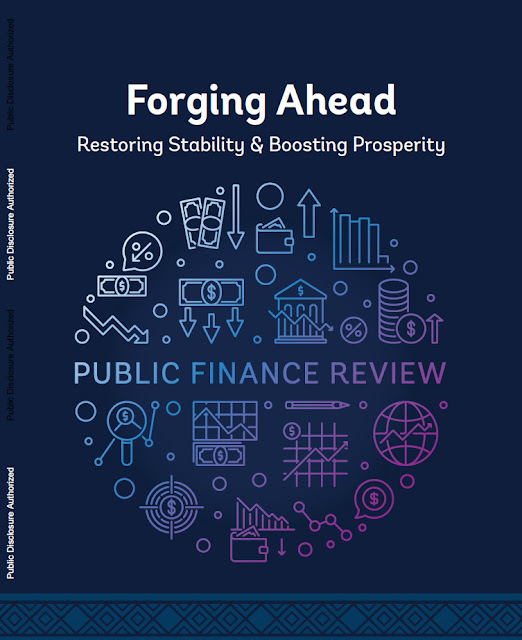Title: Lao PDR 2023 - Forging Ahead: Restoring Stability and Boosting Prosperity - Public Finance Review
By: World Bank
Publisher, Year: World Bank, January 9, 2024
Price: Free download
Publisher's Abstract
The Lao PDR is facing unprecedented macroeconomic challenges, which jeopardize hard-won development gains. Over the past two decades, the country attracted considerable foreign investment and fostered regional integration, which contributed to a long period of high economic growth. Many human development indicators improved during the period 2000–2019, including child and maternal mortality, school enrolment, income poverty, and gender equity.
However, economic growth was predominantly driven by large-scale investments in capital intensive sectors, such as mining and hydropower, which created few jobs and entailed environmental costs. Moreover, many public investments were financed by external debt, gradually jeopardizing debt sustainability and macroeconomic stability. Long-standing structural vulnerabilities have been exacerbated by the impacts of the COVID-19 pandemic and adverse global macroeconomic conditions.
Since 2021, the national currency has depreciated considerably, and inflation soared. This has had a large negative impact on living standards, with many households struggling to cope. Meanwhile, limited spending on education, health, and social protection is undermining human capital and thus economic growth prospects. Significant debt pressures, especially short-term external liquidity constraints, have pushed the country into debt distress.
This Public Finance Review identifies priority reforms to restore macroeconomic stability and boost prosperity. The objective of this review is to assess recent macro-fiscal performance, evaluate emerging fiscal risks, and propose policy reforms to secure fiscal sustainability, restore macroeconomic stability, and promote shared prosperity.
This report is comprised of five chapters covering the main aspects of fiscal management:
- Chapter 1 evaluates recent macroeconomic performance while placing fiscal policy in the broader macroeconomic context.
- Chapter 2 assesses domestic revenue mobilization efforts and scope for reforms to enhance tax collection.
- Chapter 3 investigates the size and composition of public expenditure, as well as measures to increase its efficiency and effectiveness.
- Chapter 4 discusses reforms of state-owned enterprises with a view to improving their financial performance, operational management, and corporate governance.
- Chapter 5 documents the experience with public-private partnerships and provides recommendations to maximize value for money and reduce fiscal risks.
Publisher's download link: World Bank

No comments:
Post a Comment